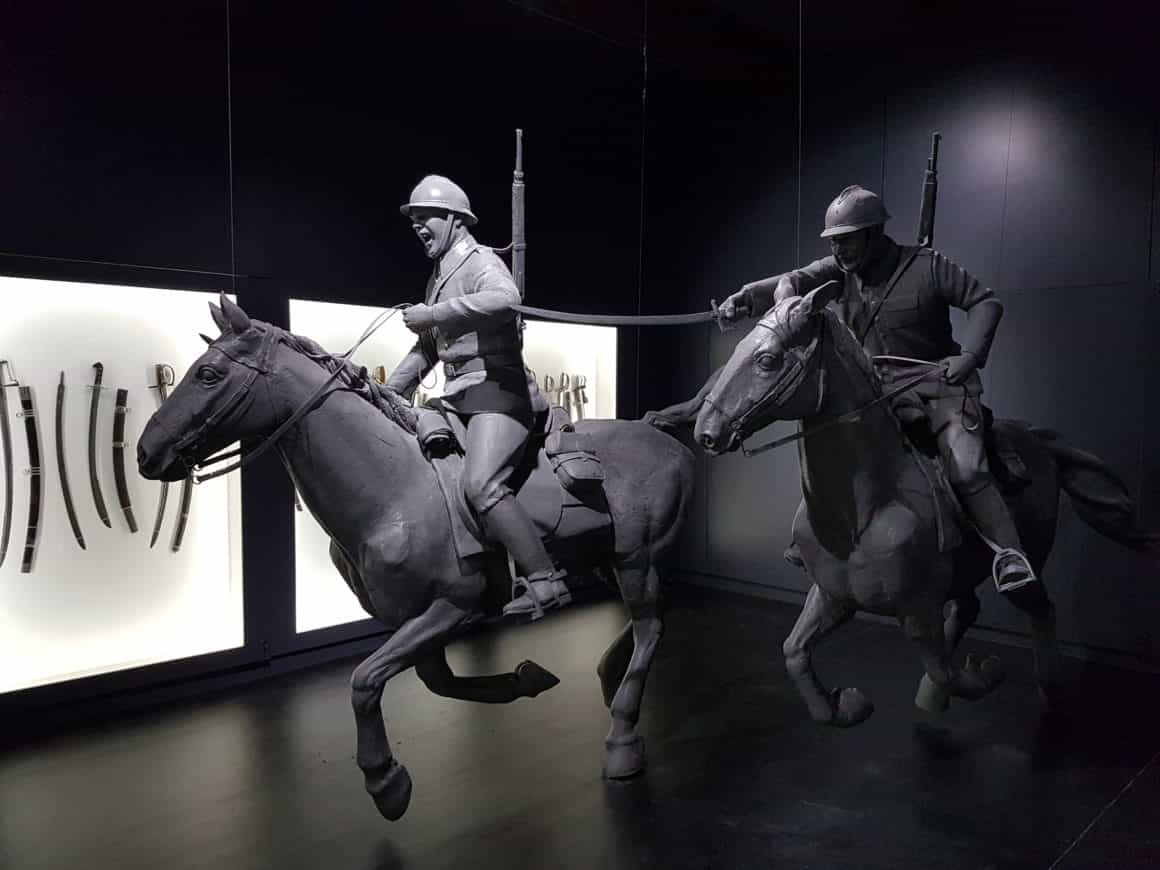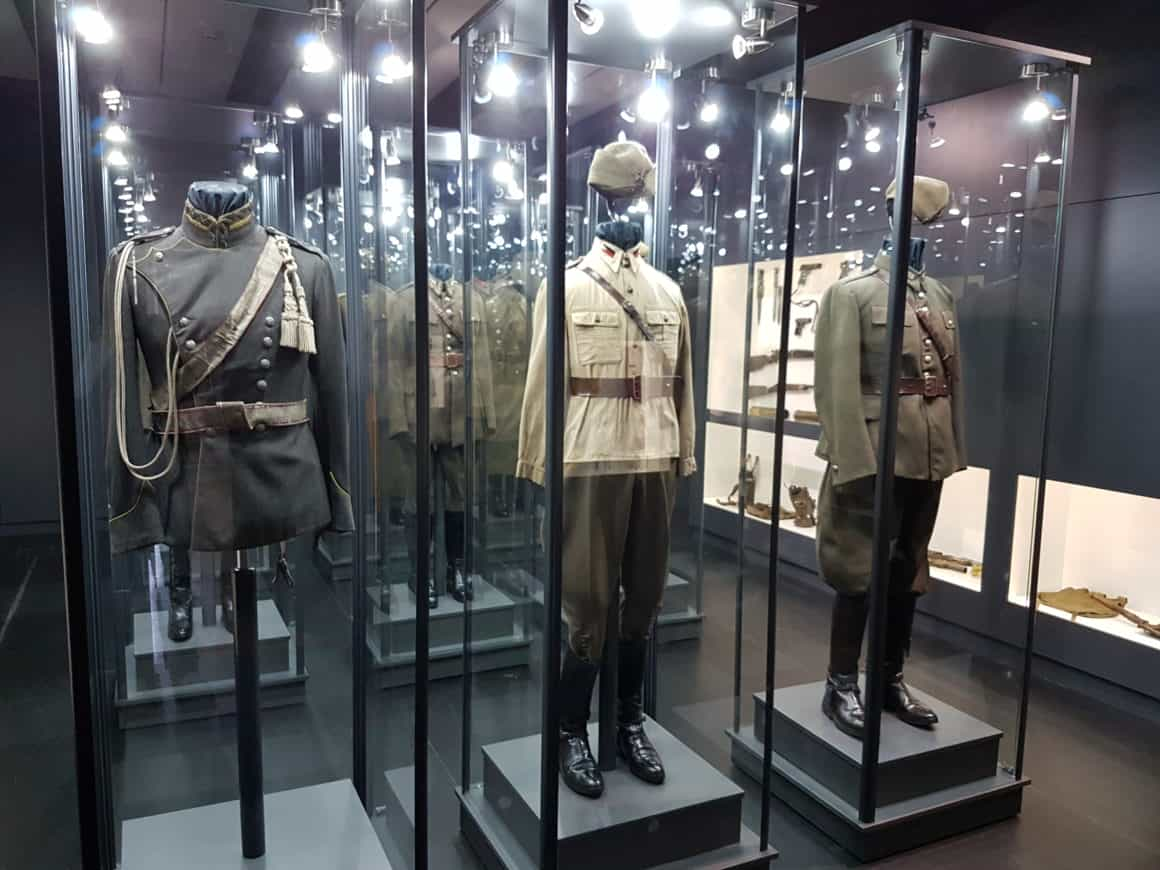The Grudziądz Museum was established on 15 June 1884 as the Municipal Museum of Antiquity, which featured mainly archeological relics. Gradually, the collection came to include historical, ethnographic, art, handicraft and numismatic exhibits.
For many years the museum did not have its seat. In 1912 the collections were displayed in a specially constructed building at 28 Legionów Street.
In 1956 the Museum was shifted to the baroque building of the former Benedictine convent, which was adapted to meet our needs. Since then it has served as the Central Building, which is home to the management team, the Education and Promotion Section with the library as well as a laboratory, and the storage rooms of the Art Section.
Currently, the Museum, which in 2005 was named after Father Dr. Władysław Łęga, includes the former monastery gate, the so-called Abbesses? Palace, and five historical granaries.
The complex of the former Benedictine convent is one of the most valuable monuments of baroque architecture in Pomerania. The Grudziądz granaries, which are situated on a high embankment, make a unique defensive line ? a typical feature of the panorama of the town viewed from the banks of the Vistula river. All the monuments were built in a consistent style characteristic of applied and defensive architecture.
Thanks to its wide range of exhibits, the museum promotes historical and artistic awareness, the material and spiritual culture of the bygone ages as well as current trends in art.
The Gallery of Modern Pomeranian Painting
Central Building, ul. Wodna 3/5
The small and cozy interior of the central building features the Gallery of Modern Pomeranian Painting, which is the showcase of the Art Section. It displays the works by Pomeranian artists since 1945, such as Bronisław Jamontt, Tymon Niesiołowski and Stanisław Borysowski, who were the founders of the Faculty of Fine Arts at Nicolaus Copernicus University in Toruń. The gallery also boasts works by their disciples including Zygmunt, Józef and Izolda Kotlarczyks, Mieczysław Wiśniewski, Barbara Steyer, Andrzej Guttfeld, Lucjan and Ewaryst Zamels, Kazimierz Jułga, Bogdan Kraśniewski, and others. This part of the gallery also features paintings by Gdańsk artists, such as: Kazimierz Ostrowski, Kazimierz Śramkiewicz, Kiejstut Bereźnicki, and others. On display are also works by contemporary Grudziądz artists, including Jerzy Feldman, Roman Aniszewski and Leszek Pawlikowski. The collection includes a number of multivalent works representing various artistic trends from realistic art to various kinds of abstract art. As these works reflect the versatility of Pomeranian artists, every visitor has a chance to learn about their achievements.
Cavalry Training Center in Grudziądz 1920-1939
Abysses? Palace, ul. Klasztorna 4
This beautiful building is home to the exhibition featuring the history of the Horse Cavalry Training Center in Grudziądz.
The exhibits were mostly donated by the former cavalrymen and their families. Visitors will find here numerous photographs recording training sessions, officer promotions, celebrations, visits of eminent guests as well as documents, certificates, officer patents, etc. The exhibition also includes highly personal souvenirs, such as the cavalry sword of ?the first cavalryman? Władysław Belina Prażmowski, the commemorative mace of General Bolesław Wieniawa-Długoszowski as well as sample cavalry uniforms and weaponry.
The History of Grudziądz
Granary, ul. Spichrzowa 9
Four floors of the granary are home to a permanent exhibition recording the history of the town and its development from the medieval period up to the year 1939. The exhibition is arranged chronologically ? each room is devoted to a particular period.
The first room shows the Grudziądz of the Middle Ages and the Nobles? Commonwealth period (from 13th to 1772). Among other things, on display are exhibits from the period when the town was under the rule of the Teutonic Knights and when it flourished following the Second Peace of Thorn (1466). Of interest are original documents, militaria, coins, everyday objects and guild souvenirs. The second room features the spatial arrangement and architecture of Grudziądz through a wide range of maps, prints, photographs, and a mock-up of the town, which is an excellent prelude to sightseeing. The third room shows Grudziądz under partitions and during the assumption of independent statehood by Poland in 1920. Visitors will find here practical items, and exhibits related to the everyday life of the town?s residents, and such events and periods as the foundation of the Fortress of Grudziądz, Poland under the German partition, and the takeover of Grudziądz by the Polish government on 23 January 1920. An undeniable attraction is a mock-up of the fortress. Finally, the fourth room boasts souvenirs recording the history of Grudziądz in 1920-1939 ? the period marked by the development of industry, craft and cultural life.
Archeological exhibitions
Granary ? ul. Spichrzowa 11/15
Small medieval stronghold in Plemięta
The exhibition shows exhibits excavated from a small medieval knight?s stronghold in Plemięta, which at the turn of 15th c. became one of the key points of the defense system built by the Order of the Teutonic Knights. The facility, which was a multi-story tower serving residential and defensive purposes, performed the function of a medium-sized knight?s manor. It was burned in 1414 during a war between Poland and the Teutonic Order.
Roman influences in Grudziądz
The exhibition features relics coming from the tombs found in burial mounds and settlements dating back to the period of Roman influences (1st c. BC ? 5th c. AD) from the surroundings of Grudziądz. These are everyday items which used to be put into the graves at burials (usually weapons, pieces of garment, and jewelry). Of special interest is a set of exhibits from the burial mound in Grudziądz-Rządz including imported goods from the area of the Roman Empire.
Medieval jewelry from Gruczno
The items at this exhibition come from the 11th-13th c. graveyards. On display is mainly jewelry and everyday objects which were put into the graves as gifts at burials, including glass, amber, and silver beads, bracelets, pendants, rings and headband ornaments, which were highly popular in the Middle Ages.
Northern part of Kulmerland in prehistory and Middle Ages
The exhibition shows the material, spiritual and social culture of the people who lived in northern Kulmerland (Land of Chełmno) from 11th c. BC to 15th c. AD. The exhibits, which come from the past and contemporary archeological excavations, include such unique items as a clay figure of a woman from Łasin, or an iron cresset from the hill fort in Słupski Młyn.
3/5 Wodna St.
86-300 Grudziądz
tel. 56 465-90-63
www.muzeum.grudziadz.pl



